
Bede, also known as Saint Bede, The Venerable Bede, and Bede the Venerable, was an English monk and an author and scholar. He was one of the greatest teachers and writers during the Early Middle Ages, and his most famous work, Ecclesiastical History of the English People, gained him the title "The Father of English History". He served at the monastery of St Peter and its companion monastery of St Paul in the Kingdom of Northumbria of the Angles.
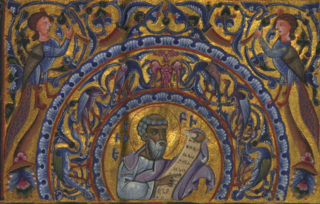
Eusebius of Caesarea, also known as Eusebius Pamphilus, was a Greek, or Palestinian historian of Christianity, exegete, and Christian polemicist. In about AD 314 he became the bishop of Caesarea Maritima in the Roman province of Syria Palaestina. Together with Pamphilus, he was a scholar of the biblical canon and is regarded as one of the most learned Christians during late antiquity. He wrote Demonstrations of the Gospel, Preparations for the Gospel and On Discrepancies between the Gospels, studies of the biblical text. As "Father of Church History", he produced the Ecclesiastical History, On the Life of Pamphilus, the Chronicle and On the Martyrs. He also produced a biographical work on Constantine the Great, the first Christian Roman emperor, who was Augustus between AD 306 and AD 337.

The extant manuscripts of the book Antiquities of the Jews, written by the first-century Jewish historian Flavius Josephus around AD 93–94, contain two references to Jesus of Nazareth and one reference to John the Baptist.

Origen of Alexandria, also known as Origen Adamantius, was an early Christian scholar, ascetic, and theologian who was born and spent the first half of his career in Alexandria. He was a prolific writer who wrote roughly 2,000 treatises in multiple branches of theology, including textual criticism, biblical exegesis and hermeneutics, homiletics, and spirituality. He was one of the most influential and controversial figures in early Christian theology, apologetics, and asceticism. He has been described as "the greatest genius the early church ever produced".

Pope Eleutherius, also known as Eleutherus, was the bishop of Rome from c. 174 to his death. His pontificate is alternatively dated to 171-185 or 177-193. He is venerated as a saint in the Catholic Church.

James the Just, or a variation of James, brother of the Lord, was "a brother of Jesus", according to the New Testament. He was the first leader of the Jerusalem Church of the Apostolic Age. Traditionally, it is believed he was martyred in AD 62 or 69 by being stoned to death by the Pharisees on order of High Priest Ananus ben Ananus. James, Joses, Simon, and Judas are mentioned as the brothers or siblings of Jesus as well as two or more unnamed sisters.
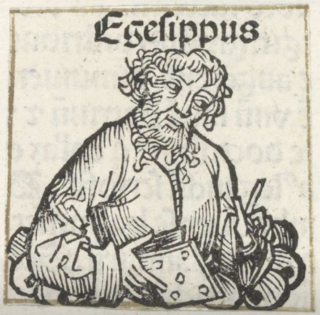
Hegesippus, also known as Hegesippus the Nazarene, was a Christian writer of the early Church who, in spite of his Greek name, may have been a Jewish convert and certainly wrote against heresies of the Gnostics and of Marcion. The dates that Hegesippus flourished are insecurely fixed by the statement of Eusebius that the death and apotheosis of Antinous (130) occurred in Hegesippus' lifetime, and that he came to Rome under Pope Anicetus and wrote in the time of Pope Eleuterus.
Salamanes Hermias Sozomenos, also known as Sozomen, was a Roman lawyer and historian of the Christian Church.
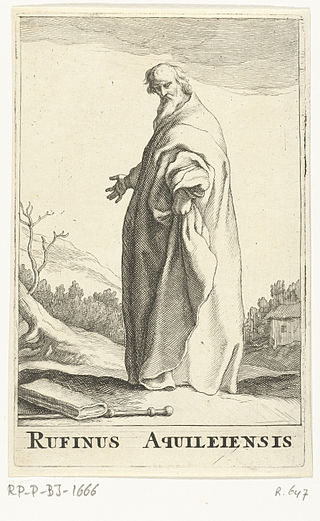
Tyrannius Rufinus, also called Rufinus of Aquileia, was a monk, philosopher, historian, and theologian who worked to translate Greek patristic material, especially the work of Origen, into Latin.
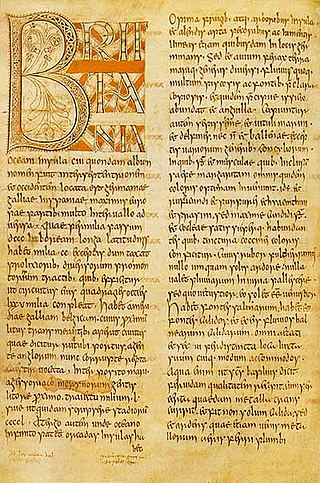
The Ecclesiastical History of the English People, written by Bede in about AD 731, is a history of the Christian Churches in England, and of England generally; its main focus is on the conflict between the pre-Schism Roman Rite and Celtic Christianity. It was composed in Latin, and is believed to have been completed in 731 when Bede was approximately 59 years old. It is considered one of the most important original references on Anglo-Saxon history, and has played a key role in the development of an English national identity.
Legend makes Abdias first bishop of Babylon and one of the Seventy Apostles who are collectively mentioned in the Gospel of Luke10:1–20. Saints Simon and Jude allegedly consecrated him as the first Bishop of Babylon. He is also associated with St. Thomas and St. Addai, recognized as the first Patriarch of the Church of the East in Syriac Christianity.
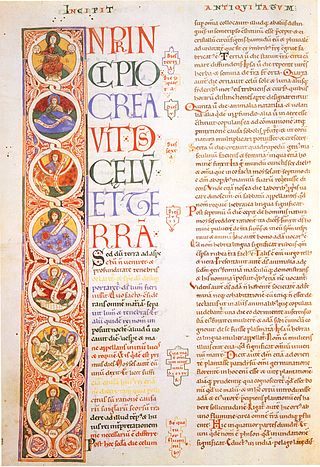
Antiquities of the Jews is a 20-volume historiographical work, written in Greek, by historian Josephus in the 13th year of the reign of Roman emperor Domitian, which was 94 CE. The book contains an account of the history of the Jewish people for Josephus' gentile patrons. In the first ten volumes, Josephus follows the events of the Hebrew Bible beginning with the creation of Adam and Eve.

The Jewish War or Judean War, also referred to in English as The Wars of the Jews, is a book written by Josephus, a first-century Roman-Jewish historian. It has been described by Steve Mason as "perhaps the most influential non-biblical text of Western history".

Josippon is a chronicle of Jewish history from Adam to the age of Titus. It is named after its supposed author, Flavius Josephus, though it was actually composed in the 10th century in Southern Italy. The Ethiopic version of Josippon is recognized as canonical by the Ethiopian Orthodox Tewahedo Church and the Eritrean Orthodox Tewahedo Church.

Chromatius was a bishop of Aquileia.

De Viris Illustribus is a collection of short biographies of 135 authors, written in Latin, by the 4th-century Latin Church Father Jerome. He completed this work at Bethlehem in 392–393 AD. The work consists of a prologue plus 135 chapters, each consisting of a brief biography. Jerome himself is the subject of the final chapter. A Greek version of the book, possibly by the same Sophronius who is the subject of Chapter 134, also survives. Many biographies take as their subject figures important in Christian Church history and pay especial attention to their careers as writers. It "was written as an apologetic work to prove that the Church had produced learned men." The book was dedicated to Flavius Lucius Dexter, who served as high chamberlain to Theodosius I and as praetorian prefect to Honorius. Dexter was the son of Saint Pacianus, who is eulogized in the work.

The Church History of Eusebius, the bishop of Caesarea, was a 4th-century pioneer work giving a chronological account of the development of Early Christianity from the 1st century to the 4th century. It was written in Koine Greek, and survives also in Latin, Syriac and Armenian manuscripts.
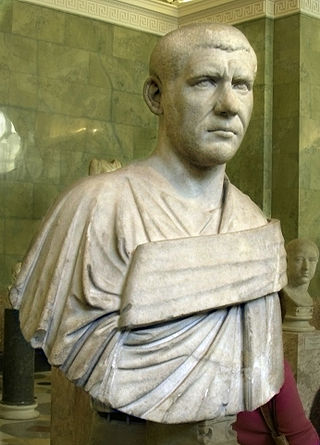
Philip the Arab was one of the few 3rd-century Roman emperors sympathetic to Christians, although his relationship with Christianity is obscure and controversial. Philip was born in Auranitis, an Arab district east of the Sea of Galilee. The urban and Hellenized centers of the region were Christianized in the early years of the 3rd century via major Christian centers at Bosra and Edessa, but there is little evidence of Christian presence in the small villages of the region in this period, such as Philip's birthplace at Philippopolis. Philip served as praetorian prefect, commander of the Praetorian Guard, from 242; he was made emperor in 244. In 249, after a brief civil war, he was killed at the hands of his successor, Decius.
The Leiden Glossary is a glossary contained in a manuscript in Leiden University Library in the Netherlands, Voss. Lat. Q. 69. The lemmata (headwords) come from "a range of biblical, grammatical, and patristic texts". It is based on an Anglo-Saxon exemplar, and was prepared c. 800 in the Abbey of Saint Gall in modern-day Switzerland.

Aristobulus of Alexandria also called Aristobulus the Peripatetic and once believed to be Aristobulus of Paneas, was a Hellenistic Jewish philosopher of the Peripatetic school, though he also used Platonic and Pythagorean concepts. Like his successor, Philo, he attempted to fuse ideas in the Hebrew Scriptures with those in Greek thought.
















